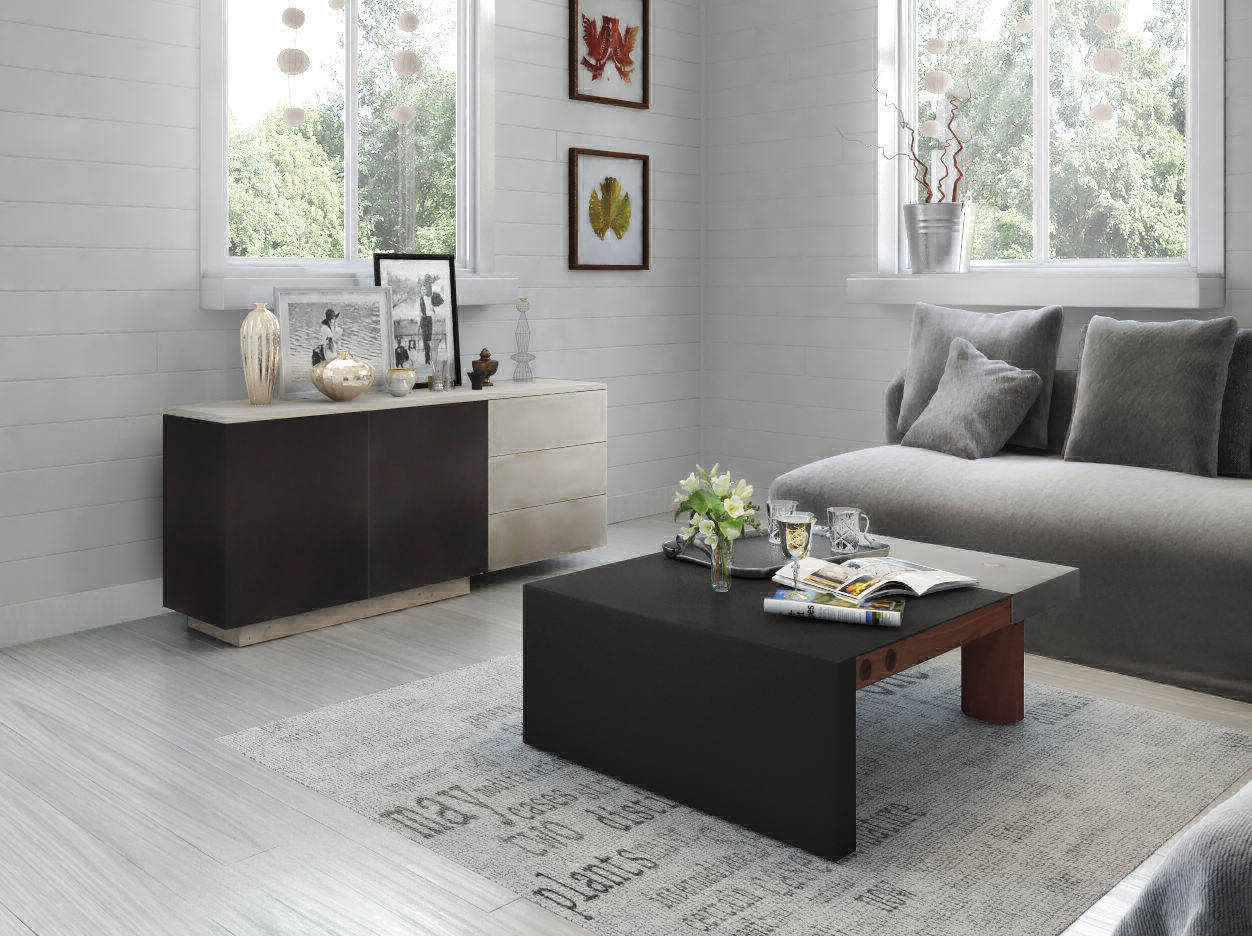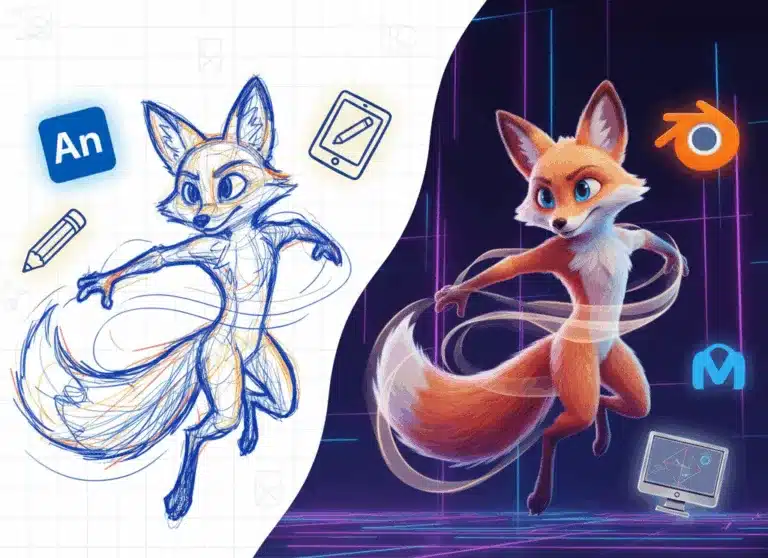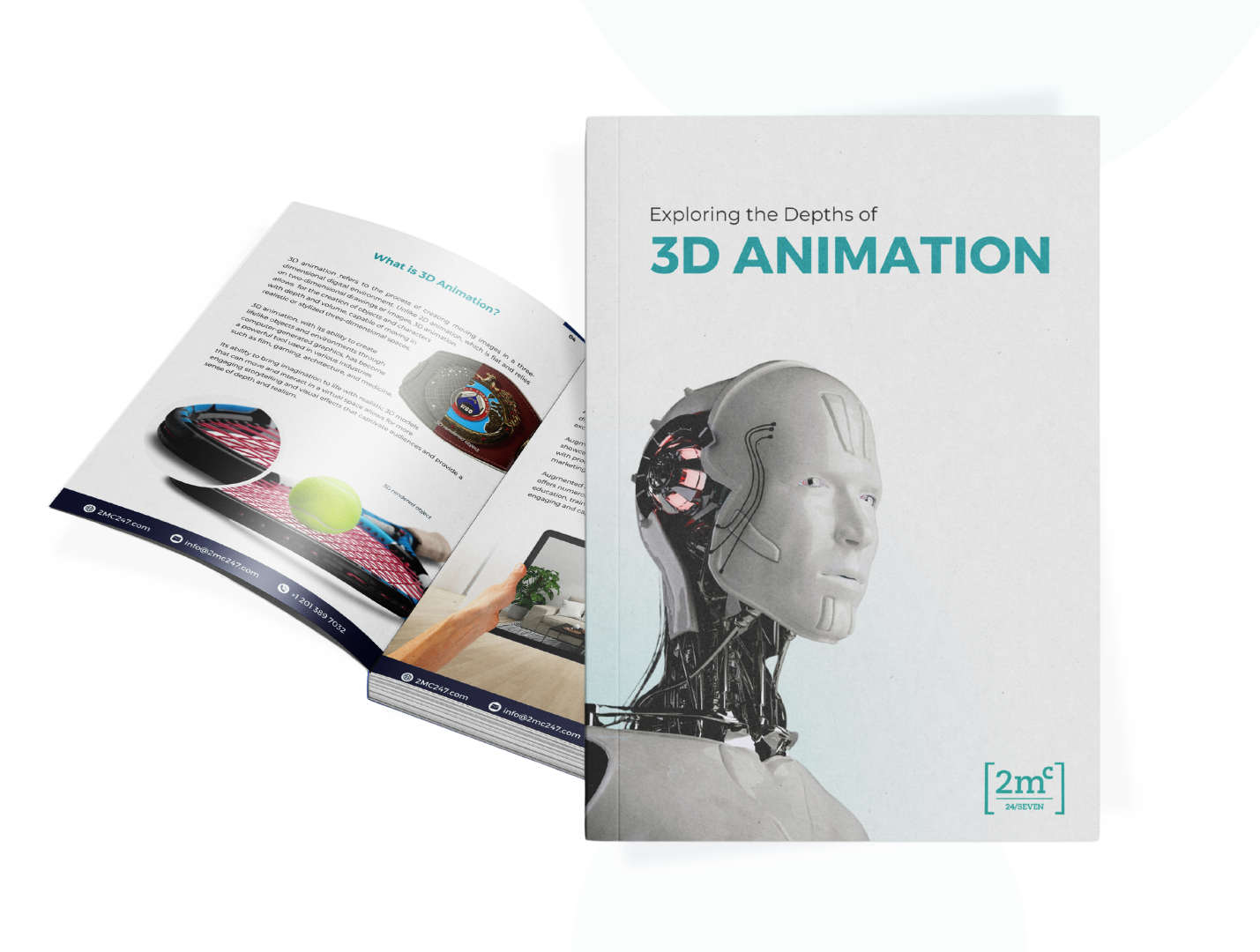The world of design has undergone a significant transformation in recent years, with the advent of 3D visualization emerging as a crucial tool for various industries. However, many people remain unfamiliar with the concept and its potential benefits.
In this article, we will delve into the intricacies of 3D visualization and provide an all-encompassing guide to immersive digital experiences. From architecture to gaming, manufacturing to marketing, 3D visualization has become an essential aspect of modern-day design. The use of advanced technologies like virtual reality (VR) and augmented reality (AR) has revolutionized the way designers conceptualize their creations.
This article aims to demystify 3D visualization by exploring its definition and applications, evolution from traditional art to cutting-edge technology, fundamental principles of modeling in visualization, innovations in product development, and a whole lot more.
Finally, we will look ahead at future trends that promise even more exciting possibilities for those working within this field.
Ready?
Let’s begin!
What is 3D Visualization?
3D visualization is a computer-based process of creating graphical content that has numerous applications in various industries, including architecture, gaming, manufacturing, entertainment, and marketing. It offers significant benefits over traditional methods of creating graphical content. One of its main strengths lies in the power it holds to create immersive digital experiences.
With 3D visualization, designers can create realistic models that allow viewers to interact with the design elements in a way that was previously impossible. This technology can help architects and engineers better visualize their designs before construction begins, reducing costs and increasing efficiency.
In the gaming and entertainment industries, 3D visualization allows for the creation of stunning visuals and engaging experiences that immerse the user in a new world.
The power of 3D visualization extends beyond just visual appeal; it also offers practical advantages such as being able to make changes quickly and easily without having to start from scratch.
As technology continues to advance, 3D visualization will only become more powerful and offer even greater benefits across an increasingly diverse range of industries. The evolution from traditional art techniques to cutting-edge software tools has made this technology accessible to more people than ever before.
The Evolution of 3D Visualization – From Traditional Art to Cutting-Edge Technology

The use of visualization software has revolutionized the way artists create and present their work, allowing for more immersive digital experiences. With virtual reality and augmented reality becoming increasingly popular, 3D visualization has become an essential tool for creating realistic and engaging content.
In the past, traditional art forms such as painting and sculpture were limited by physical constraints. However, with the development of 3D modeling software, artists can now create complex designs that were once impossible to achieve. This has led to a new era in which artists are no longer bound by physical limitations but can instead explore new creative possibilities through digital means.
As technology continues to evolve, so too does the field of 3D visualization. Virtual reality and augmented reality have opened up new avenues for artists to explore, allowing them to create immersive experiences that blur the line between real and virtual worlds. In the next section, we will explore the fundamentals of 3D modeling in visualization and how it plays a crucial role in creating these innovative digital experiences.
Exploring the Fundamentals of 3D Modeling in Visualization
As artists continue to push the boundaries of creative possibilities, a solid understanding of the fundamentals of modeling in visualization becomes increasingly essential.
3D modeling is the process of creating three-dimensional objects using specialized software. This technique is used extensively in product design, architecture, interior design, and other industries that require realistic 3D representations.
To create a 3D model, artists start with a wireframe structure that defines the basic shape of the object. They then add details such as texture and color to create a more realistic representation. Modeling can be done using polygonal or NURBS-based techniques, each with its benefits and drawbacks.
Once completed, these models can be rendered into images or animations using visualization software.
The ability to accurately model 3D objects is crucial for creating immersive digital experiences. Interior designers use 3D models to visualize room layouts and test different furniture arrangements. Product designers use them to prototype new designs and test their functionality before manufacturing begins.
In short, mastering the fundamental principles of 3D modeling is an essential step toward creating compelling visual content that resonates with audiences across various industries.
Unveiling the Secrets of Photorealistic Rendering in 3D Visualization
Achieving photorealistic rendering in 3D visualization requires a deep understanding of lighting, textures, and advanced rendering techniques that can bring digital content to life with stunning realism.
To achieve this level of detail, 3D artists must pay close attention to the small details that make up an image. This includes understanding how light interacts with different surfaces, creating realistic textures that mimic real-world materials, and utilizing advanced rendering techniques like ray tracing and global illumination.
Photorealistic rendering also requires a powerful computer system capable of handling complex calculations quickly. This means using high-end graphics cards and processors specifically designed for 3D visualization workloads. Additionally, artists must have access to specialized software tools like Autodesk Maya or Cinema 4D that provide the advanced features needed to create realistic images.
To further enhance the realism of their work, artists may also utilize additional tools like HDR imaging and physically based materials. These techniques allow artists to accurately simulate real-world lighting conditions and material properties, resulting in even more lifelike images.
By combining these visualization techniques with powerful hardware and software solutions, artists can create truly immersive virtual environments that blur the line between reality and digital art.
Advancements in 3D Visualization
The evolution of 3D visualization software has transformed design presentations from static images to dynamic animations. Real-time rendering capabilities allow for faster design iteration and decision-making.
The immersive nature of 3D visualization facilitates emotional connections with the audience, helping designers effectively communicate their vision.
These advancements, coupled with the intersection of 3D visualization and artificial intelligence (AI), bring forth unparalleled efficiency, accuracy, and insights. Let’s explore them below:
Virtual Reality (VR) in 3D Visualization
Virtual reality offers fully immersive experiences, allowing users to engage with realistic simulations. In architectural visualization, VR enables clients to virtually experience designs before they are constructed. This immersive technology enhances understanding, facilitates feedback, and aids in making informed decisions.
Augmented Reality (AR) in 3D Visualization
Augmented reality enhances real-world experiences by overlaying virtual elements onto the physical environment. It provides designers and customers with a unique perspective, allowing them to visualize designs in their intended context.
AR applications, like Ikea’s Place app, help users preview furniture in their homes, reducing costs and eliminating the need for physical prototypes.
Interactive 3D Visualization
Interactive 3D visualization empowers users by enabling real-time manipulation and exploration of 3D models. It fosters engagement, as users can interact with the design elements, gaining deeper insights into their functionality and impact.
This level of interactivity enhances the design process, allowing for valuable feedback and customization options.
Parametric 3D Modeling
Parametric 3D modeling empowers designers with customization and flexibility. By adjusting specified parameters, designers can efficiently modify their designs without starting from scratch. This approach enables the creation of unique designs, pushing the boundaries of traditional design methods. Parametric modeling software provides designers with extensive control over size, shape, color, texture, and other design elements.
The Intersection of 3D Visualization and Artificial Intelligence (AI)
The integration of AI and 3D visualization has revolutionized various industries. In medical visualization, AI algorithms enable the creation of accurate models, aiding in patient diagnosis and treatment planning. In property development, AI helps in the completion of project plans faster than usual and aides in creating automated and intelligent designs that takes into account personal needs of the future residents. AI-powered analysis of large datasets in manufacturing optimizes production processes, identifying bottlenecks and defects in real-time. The synergy between AI and 3D visualization provides deeper insights, improves efficiency, and enhances accuracy.
Machine Learning in 3D Visualization
Machine learning algorithms automate complex processes within 3D visualization workflows. They can perform tasks like automated feature detection, object recognition, and image segmentation. In architectural visualization, machine learning can analyze building plans and generate accurate 3D models efficiently.
This automation streamlines workflows, saves time, and improves accuracy, though careful implementation and oversight by experienced professionals are crucial to ensure reliable results.
In summary, advancements in 3D visualization, including virtual reality, augmented reality, interactivity, parametric modeling, and integration with AI and machine learning, have transformed the design landscape.
These technologies enhance understanding, improve efficiency, empower users, and facilitate effective communication, revolutionizing industries and pushing the boundaries of creativity and innovation.
Navigating the World of 3D Visualization Software – Tools and Techniques
Navigating the vast world of 3D visualization software is akin to traversing a labyrinthine maze, requiring designers to carefully consider which tools and techniques will best suit their needs. With an abundance of options available, it can be challenging to determine which software is the right fit for a particular project.
Some factors to consider when selecting 3D visualization software include design presentation capabilities, visualization services offered, and compatibility with other programs.
Design presentation capabilities are crucial in 3D visualization software as they allow designers to showcase their work in a visually compelling manner. Visualization services offered by the software should also be considered as they greatly impact the quality of rendered images or animations. Compatibility with other programs is another important factor that should not be overlooked since many projects require multiple pieces of software to work together seamlessly.
Ultimately, choosing the right 3D visualization software comes down to individual needs and preferences. Designers must evaluate all aspects of each program before deciding on one that will best serve their goals.
In the following section, we will explore how natural language processing plays a role in enhancing the user experience within these tools and techniques.
The Role of Natural Language Processing in 3D Visualization – From Voice Commands to Intelligent Interactions
Natural language processing has become an increasingly important aspect of 3D visualization software, enabling voice commands and intelligent interactions that enhance the user experience. With natural language processing, users can interact with 3D visualizations using simple voice commands, making the process faster and more efficient.
This feature is particularly useful in architectural visualization for a house, where users can simply tell the software to change the color of a room or move furniture around.
One of the key benefits of natural language processing in 3D visualization software is its ability to bridge the gap between different languages. With this feature, users can communicate with 3D visualization software in their native language without having to learn complex commands or terms. This makes it easier for users from different backgrounds to collaborate on projects and share ideas.
Overall, natural language processing plays an important role in enhancing the user experience of 3D visualization software. Allowing for voice commands and intelligent interactions helps speed up workflows and makes collaboration more efficient. In the next section, we will discuss how data visualization can transform complex information into visual stories without losing its meaning or impact.
Understanding the Importance of Data Visualization in 3D – Transforming Complex Information into Visual Stories
Ironically, the importance of data visualization in 3D lies not in its ability to create flashy and immersive digital experiences, but rather in its capacity to transform complex information into visual stories that are both impactful and easily comprehensible.
Data visualization is a crucial aspect of 3D visualization software as it enables users to translate large amounts of data into meaningful representations. This is achieved by using various techniques such as color coding, scaling, and animation.
One of the primary differences between 3D rendering and 3D visualization is that rendering focuses on creating photorealistic images while visualization emphasizes creating interactive experiences that allow users to explore and interact with virtual environments. As such, data visualization plays a critical role in 3D visualization by helping users make sense of complex information through interactive visualizations.
By using advanced techniques such as virtual reality and augmented reality, designers can create immersive experiences that enable users to see and experience complex data in new ways.
Overall, understanding the importance of data visualization in 3D can help designers create more effective visualizations that communicate complex information accurately and engagingly. By leveraging modern technologies like artificial intelligence (AI) and machine learning (ML), designers can create powerful visualizations that empower decision-makers with insights into their business operations or products.
3D Visualization in Architecture – Designing Spaces with Precision and Creativity
The use of 3D visualization software has become increasingly prevalent in the architecture industry as it allows designers to create spaces with both precision and creativity. With this technology, architects can create realistic and immersive visualizations that help clients better understand their projects before construction even begins.
The benefits of 3D visualization in architecture are numerous, including:
- Enhancing communication between architects, clients and contractors by providing a clear representation of the final product.
- Allowing for faster design iterations and changes.
- Increasing accuracy and reducing errors in the design process.
Moreover, 3D visualization software provides architects with new tools to explore creative possibilities that might not be readily apparent using traditional methods. By experimenting with different materials, lighting conditions, and layouts virtually, architects can push boundaries and deliver innovative designs that meet client needs while also standing out from the competition.
The use of 3D visualization software is transforming the way architects approach design. It has become an essential tool that helps them create accurate representations of buildings while also allowing them to explore new ideas creatively.
But it’s not just the architecture industry that’s being revolutionized with 3D visualization. Let’s explore how this technology is also changing other industries beyond architecture.
Unleashing the Power of 3D Visualization in Product Development and Prototyping
Unlocking the potential of 3D visualization in product development and prototyping is like having a key to a door that opens up endless possibilities for innovation and creativity. With 3D visualization, designers can create detailed visual representations of their ideas, test them in real-time, and iterate quickly based on feedback. This helps reduce errors, saves you time and money, and ultimately leads to better products.
One of the biggest advantages of using 3D visualization in product development is its ability to create accurate prototypes quickly. In the past, physical prototypes were often used to test designs before production.
However, this process could be expensive and time-consuming. With 3D visualization software, designers can create virtual prototypes that allow them to see how a product will look and function without the need for costly physical models.
Moreover, 3D visualization also offers greater flexibility than traditional prototyping methods. Changes can be made easily since there is no need for tooling or retooling when making adjustments.
Therefore designers may experiment with different materials or design features until they find what works best for their project requirements. These benefits have helped accelerate the pace of innovation across various industries from automotive engineering to electronics manufacturing.
As we move forward into an era where technology plays an increasingly important role in our lives – from healthcare to transportation – it’s crucial that we continue exploring new ways of applying emerging technologies such as 3D Visualization to improve our products’ quality and performance while reducing costs and time-to-market delays.
Future Trends in 3D Visualization – From Holographic Displays to Neural Interface Design
The future of 3D visualization technology is set to revolutionize the way we market properties. According to a recent report by Allied Market Research, the global 3D visualization market size is expected to grow from $1.48 billion in 2019 to $7.96 billion by 2027, at a Compound Annual Growth Rate (CAGR) of 23.1% during the forecast period.
This growth can be attributed to the increasing demand for immersive digital experiences that enable customers and businesses alike to visualize products and spaces in realistic detail.
One exciting development on the horizon is holographic displays, which offer an even more immersive experience than traditional virtual tours or visualizations. Holographic displays use light diffraction and interference patterns to create three-dimensional images that appear as if they are floating in mid-air.
This technology could be used to showcase properties in a completely new way, allowing customers to explore every nook and cranny of space without ever leaving their homes.
Another trend worth watching is neural interface design, which involves using brain-computer interfaces (BCIs) to control digital objects through thought alone.
While still in its early stages, this technology has enormous potential for enhancing the user experience of 3D visualizations by enabling users to manipulate objects with greater precision and speed than traditional input devices like keyboards or mice.
As these technologies continue to evolve, it’s clear that the future of 3D visualization is limited only by our imaginations.
Conclusion
In summary, 3D visualization is an essential tool being used in almost every industry imaginable. From architecture and entertainment to retail and anything else you can imagine, 3D visualization adds value and creates engagement. Leveraging 3D visualization to create an immersive digital experience has become a fundamental element in many business functions, like product development and prototyping, medical imaging and surgical planning, as well as virtual tours and real estate marketing.
As technology continues to evolve, future trends in 3D visualization may bring exciting and futuristic advancements right into our homes and everyday lives. Advancements such as holographic displays and neural interface design capabilities could potentially impact every aspect of our lives.
Frequently Asked Questions
What are some common software tools used in 3D visualization?
Commonly used software tools for 3D visualization include Autodesk products such as 3ds Max, Fusion 360, and Revit; Unity Industrial Collection; Cinema 4D; and Maya. These tools are widely used in various industries for creating immersive digital experiences.
Can 3D visualization be used in medical imaging and surgical planning?
3D visualization is used in medical imaging and surgical planning to create accurate representations of a patient’s anatomy, aiding in diagnosis and treatment. Like a surgeon using a scalpel, 3D visualization tools allow for precision and accuracy in medical procedures.
How has virtual reality impacted the field of 3D visualization?
Virtual reality has revolutionized the field of 3D visualization by allowing users to interact with digital models in a fully immersive environment. This technology has enabled designers and architects to create more realistic visualizations and has enhanced communication between stakeholders.
What are some benefits of using 3D visualization in architecture and construction?
3D visualization in architecture and construction provides benefits such as efficient communication, early detection of design flaws, accurate cost estimation, and improved collaboration among stakeholders. This helps reduce errors, save time and costs, and enhance project outcomes.
How does natural language processing play a role in 3D visualization?
Natural language processing (NLP) plays a significant role in 3D visualization by enabling systems to understand and analyze human language. It can extract information from text data, convert it into structured data, and facilitate effective communication between users and machines.





